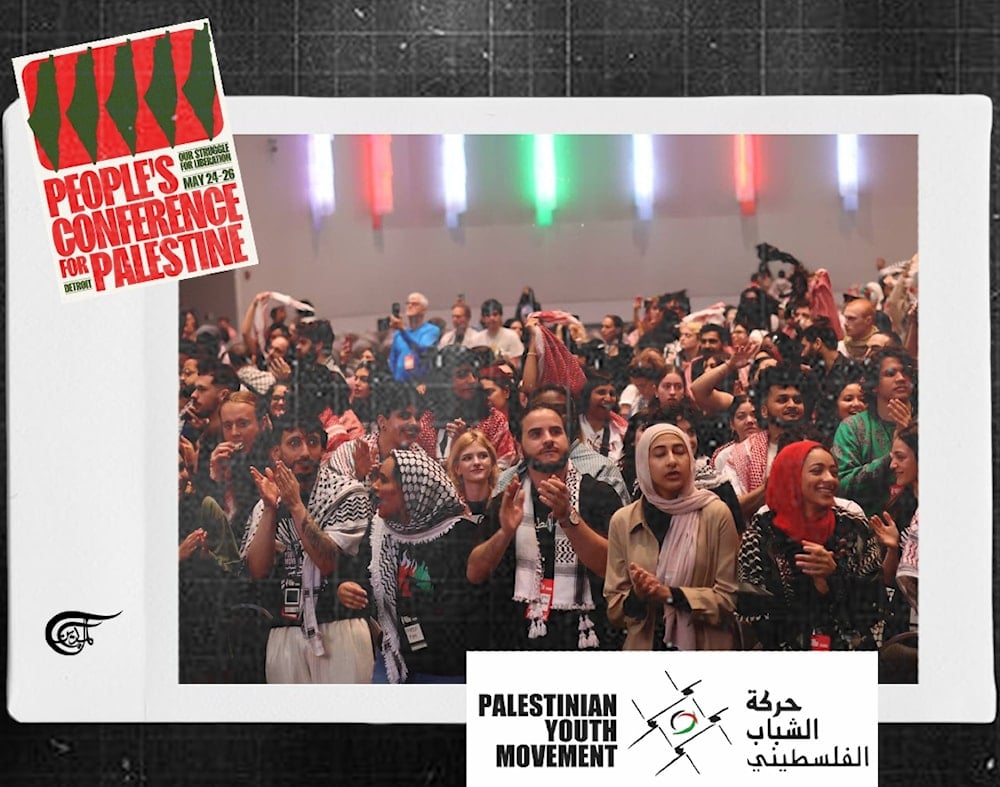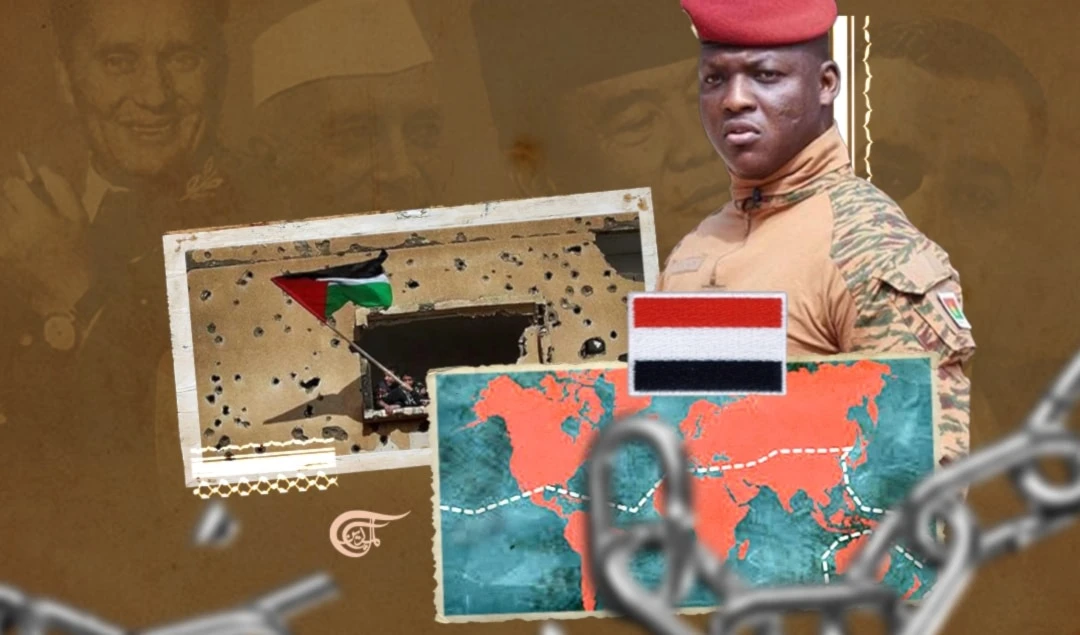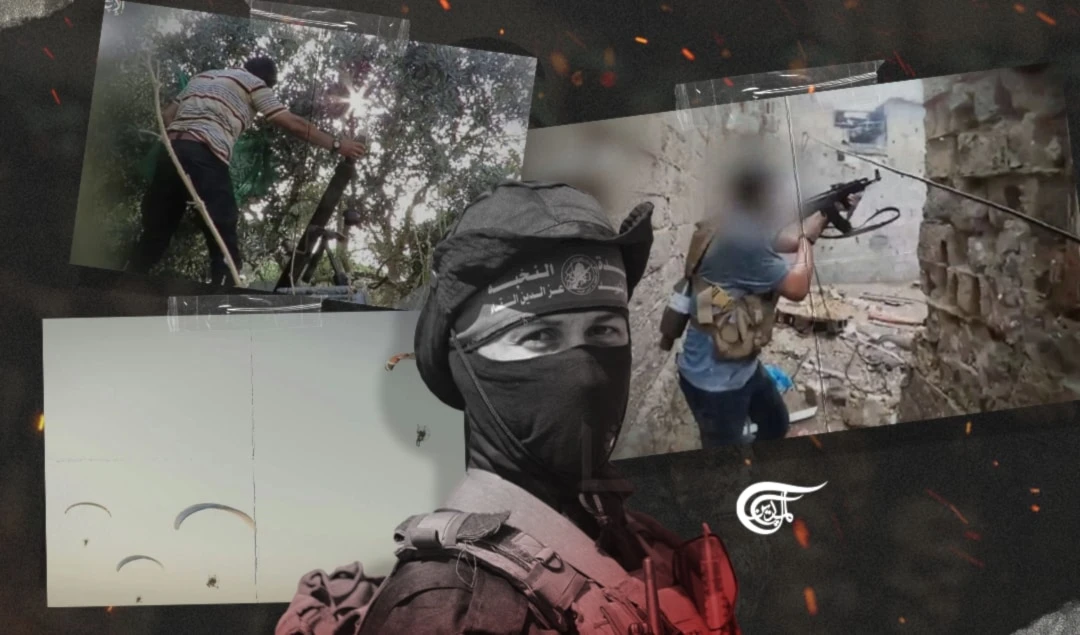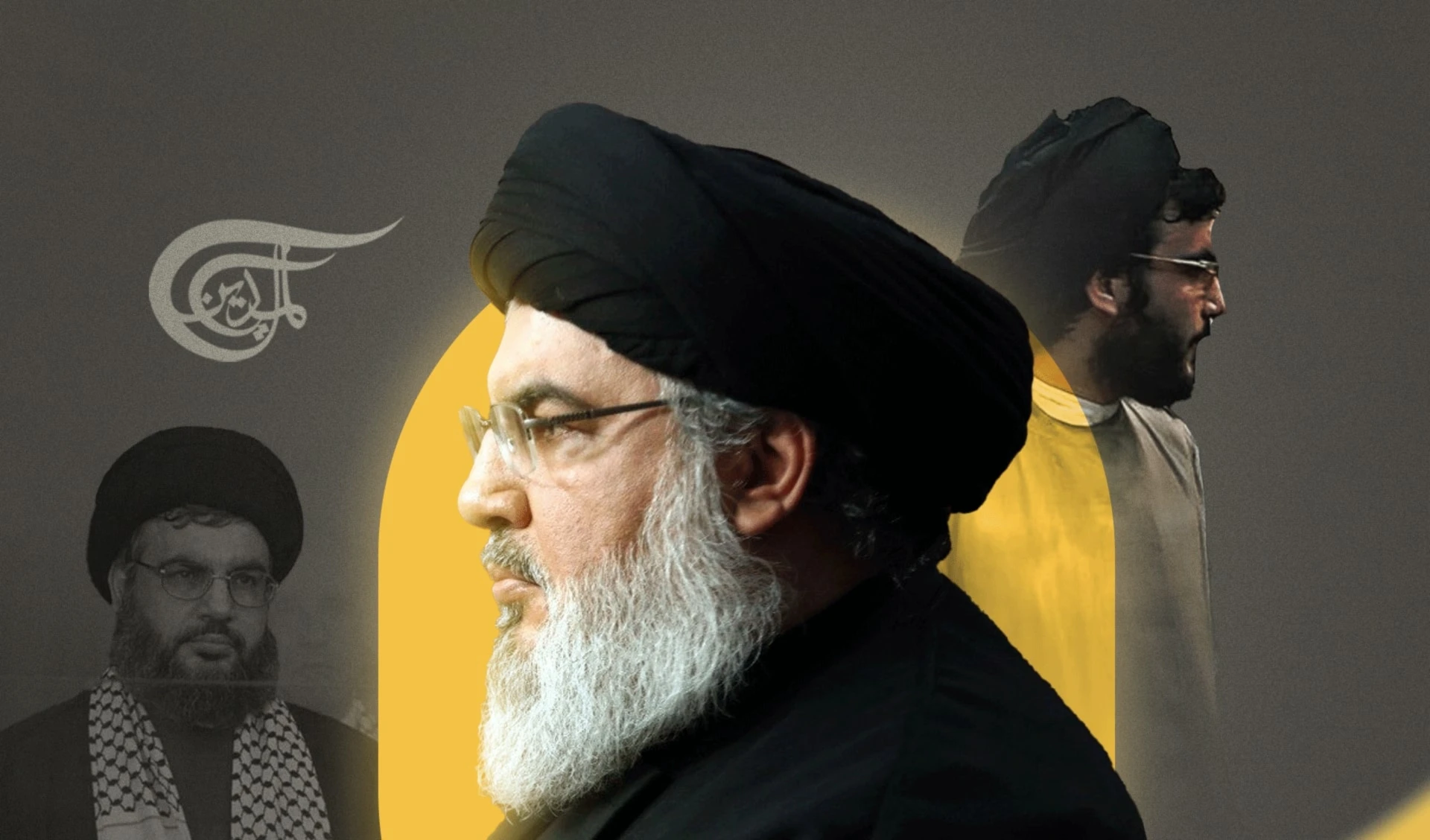People’s Conference for Palestine reinvigorates the united front for Palestine
This conference, which was put together by the convening organizations in only three months–while still doing work in their own locales–is a testament to the seriousness of Palestine organizing in this new post-October 7th period.
-

The movement for Palestinian liberation is necessarily a transnational one, because all the contradictions of the capitalist-imperialist world system are present in Palestine. (Al Mayadeen English; Illustrated by Batoul Chamas)
With over 3,400 registrants and an atmosphere of resistance, art, music, political analysis, and solidarity, the People’s Conference for Palestine was kicked off on Friday, May 24th. It would have been unthinkable to have this conference 5 years ago — even in the heartland of Arab-America, Detroit, where the conference took place.
The events of October 7th, and the protracted people’s war waged against Zionism by the Axis of Resistance made this conference possible. Without the noble Resistance in West Asia, the student movement across North America and Europe would not have kicked off. Speaker Raja Abdelhaq said that it is because of the Resistance that 18- and 19-year-old students in the West are breaking the isolation of Palestine and showing that our struggle isn’t about ending the occupation only, but imperialism everywhere.
The MC of the conference and Palestinian Youth Movement (PYM) member, Mohammed Nabulsi, argued that those of us outside of Palestine are one front of many in the war against Zionism, not the sole front. This was confirmed by another speaker, Tara Alami of the Palestine Feminist Collective who said, “the Palestinian revolution itself is a collective and interconnected struggle…we make sure not to silo, for example, women to one sector of the struggle, away from workers or the other way around”. This conference has broken the ideological error of nihilism and defeatism which is spread by certain political actors in the West.
Attendees came from across the world — from Palestine, South Africa, Puerto Rico, Canada, and all over Europe and Asia. The movement for Palestinian liberation is necessarily a transnational one, because all the contradictions of the capitalist-imperialist world system are present in Palestine. The keynote speaker shook the crowd and brought many to tears with her story, and her speech. This speaker was none other than Sanaa Daqqa [wife of martyr Walid Daqqa], who went through great trials and tribulations to get a visa and to speak in the US; coming straight from the airport to deliver her speech. She brought along with her Milad, she and Walid’s miracle child who is herself a symbol of Sumud (resilience) and revolution. Immediately after this, there was a talk on revolutionary optimism, where the psychological works of Franz Fanon, along with stories from the life of Basel Al-Araj were fused together in order to stir the crowd to further action, and to do the most realistic thing we can in this moment: demand liberation and envision liberation as a ‘when’ instead of an ‘if’.
The whole message of the conference can be summed up by saying this: The primary contradiction in our movement is the conflict between our Resistance and the Zionist-imperialist alliance. We mustn’t let fitnah (discord) and factionalism—secondary contradictions—guide our course. We must stay steadfast and firm in our struggle against Zionism and imperialism. Speaker Myriam Abu Samra argued that this was a historical conference precisely because the youth and all the organizers are overcoming “the fragmentation which was imposed on our people in the post-Oslo period…what we are witnessing today is the new generation reaffirming their role, reaffirming their commitment to the national cause…across all the different geographies”.
One of the most incredible facets of the conference was that for three days, I felt that the system of fragmentation emanating from the Nakba to Oslo was totally shattered, and this was affirmed in two key ways. Firstly, the ability of the conference organizers to bring Sanaa and Milad Daqqa to the conference in person, after many other speakers had been denied visas or interrogated at Customs, and this was truly breathtaking. As Sanaa spoke, many in the room wept and held each other close, while also listening closely to the lessons she imparted to us from the martyr Walid and the whole prisoners' movement.
Secondly, Palestinian author and PFLP member Dr. Wissam Rafeedie spoke at the conference via video link on two occasions. Rafeedie gave his views on the tasks ahead of the Resistance in Palestine, affirming that in the historical sense, Hamas and PIJ do not represent aberrations in the movement for Palestinian liberation, but rather are constituent elements of the nationalist struggle who represent the will of the Palestinian people. Dr. Rafeedie also shared his view and the view of Palestinians inside of Palestine on the ongoing movement in Europe, Asia, and North America. The ability to receive feedback from inside Palestine was profound for all the organizers in attendance. Rafeedie affirmed that this is one struggle with multiple fronts, also being realistic that the Resistance in Palestine is leading the charge, while outside Palestine the struggle has limits due to its geography.
The PYM responded in a clear and sharp manner, by announcing at the end of the conference a focused boycott of Maersk, the shipping company responsible for most of the shipments of arms to the Zionist colony. Aside from Resistance and boycotts, the importance of the student movement was a key focus of the conference.
Many members of the General Union of Palestine Students (GUPS) were in attendance, highlighting the protracted and multi-generational struggle for Palestine. The GUPS members were honored with a standing ovation, all the while sharing their advice and feedback with the new generation of PYM and SJP members.
During a talk on the student intifada, speakers from Warwick University, Birzeit University, and the University of Bologna spoke about the differing conditions of the movement on its different fronts. Italian students connected with their communities and the unions, engaging in joint struggle. When the Italian dock workers union ended their strike and got a pay raise, they also demanded that a refusal to accept Israeli ships at the port be a part of the new contract. The student from Birzeit spoke about the situation on campus there, with repression from the comprador PA and the occupation forces. Yet, despite this, they have set up the Martyrs University for Gaza, complete with free lectures, discussion groups, and other free events. She insisted that despite the repression, martyrdom, and arrests of students, their movement continues to answer the call for Gaza. As the conference came to an end, students from SOAS in London shut down the financial office, demanding divestment.
Over $200,000 was raised for Gaza by the attendees throughout the three-day conference; all proceeds will go to the Middle East Children’s Alliance. This is a calculated, political decision according to the organizers. All the money raised from registrations will be donated, and thus another front of support is opened from exile towards Palestine. In sum, this conference provided a morale boost to those already doing the work for Palestine, and also allowed for those who were in attendance to return to their home base and share the knowledge and strategies they learned, to further increase the efficacy of the work already being done.
The fact that this conference was put together by the convening organizations in only three months–while still doing work in their own locales–is a testament to the seriousness of Palestine organizing in this new post-October 7th period.
In an echo of the Grenadian revolutionaries: forward ever, backward never!

 Hanna Eid
Hanna Eid
 7 Min Read
7 Min Read











